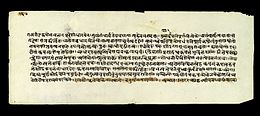Wednesday, 27 July 2016
Sushrut-samhita Bhanumati Commentary ByChakrapaniDatta
Tags
About gamrclib
alistarbot is a blogger resources site is a provider of high quality blogger template with premium looking layout and robust design. The main mission of templatesyard is to provide the best quality blogger templates.
Subscribe to:
Post Comments (Atom)




No comments:
Post a Comment